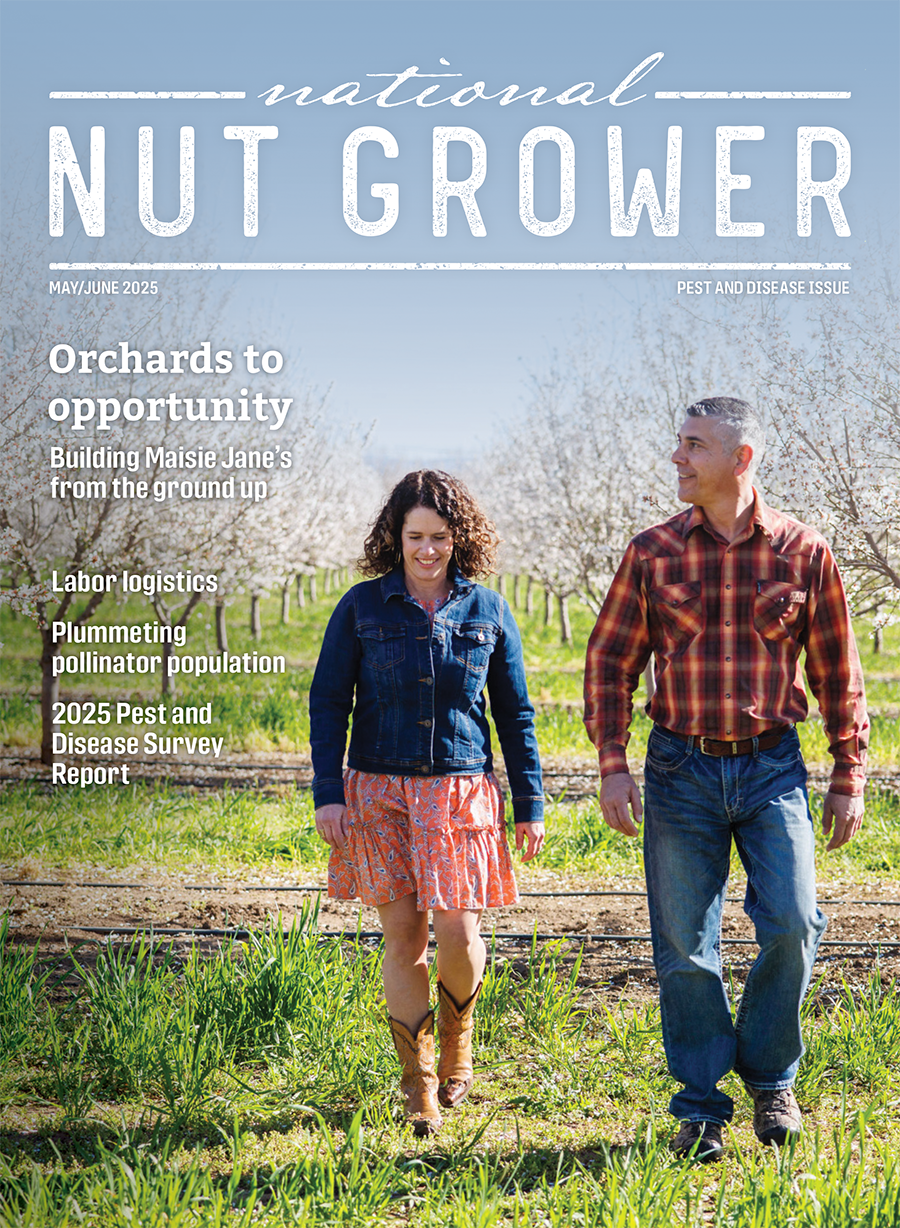On Oct. 10, 2018, Hurricane Michael made landfall near Mexico Beach, Florida, as a Category 5 hurricane, with peak, sustained winds estimated at 160 mph. It was the strongest hurricane on record to make landfall in the Florida panhandle. When it entered southwest Georgia as a Category 3 hurricane, packing wind gusts as high as 115 mph, it became the first major hurricane to directly hit Georgia since the 1890s.
The storm caused extensive destruction throughout the hurricane’s path, which included substantial agricultural production areas. Before the hurricane hit, the 2017 U.S. Department of Agriculture (USDA) Census of Agriculture estimated the market value of agricultural products sold in Georgia to be $9.6 billion. Those sold in Florida were valued at $7.4 billion.
Immediately after the hurricane, experts from the University of Georgia and the University of Florida estimated that losses to agricultural production exceeded $2.5 billion in Georgia and $1.4 billion in Florida. (Additional data for timber losses was provided by the Georgia Forestry Commission and the Florida Forest Service.)
U.S. Congress has made many attempts to allocate disaster assistance for this region to help offset these losses. However, more than six months later, no bill has passed both the House and Senate and the president has not signed any legislation.
Agricultural producers in the region are struggling to recover from this disaster without additional federal assistance, even as the 2019 spring planting season is now fully underway.
A recent survey of Cooperative Extension county agents in both states showed there is a great deal of continued uncertainty about future production in affected areas.
Many farmers in the region are unable to fully, or even partially, begin their usual production activities for the 2019 season because of the losses or damages sustained from Hurricane Michael. The lingering problems are more pronounced in field crops including cotton, peanuts, corn and soybeans, as well as fruits and vegetables, pecans and beef cattle. The most common reasons for the recovery delay: the lack of adequate financing and incomplete cleanup and repairs.
Some farmers have simply gone out of business or permanently stopped farming.
Hurricane Michael also inflicted significant, and in some cases catastrophic, damage to farmhouses, buildings, equipment, fencing, irrigation systems and perennial plantings. As a result, producers face mounting costs for cleanup, replacements and repairs. Without disaster relief aid, farmers are having a hard time getting the financing they need to repair or replace damaged infrastructure.
Many damaged irrigation systems still have not been fixed or replaced. These systems are a critical risk-management investment for agricultural producers who rely on irrigation to provide more consistent yields and to protect against other weather conditions, such as drought. Without these systems ready to use for the 2019 growing season, farmers risk significant reductions in agricultural production, especially for field crops, fruits and vegetables.

Farm buildings, fences and other farm equipment await repair. And time is working against our agricultural producers. There has just not been enough time or labor available to complete these repairs, putting an additional burden on producers who need to focus their time and energy on moving forward to the next crop year.
Timberland was also particularly hard hit across the region, which is one of the leading forest-producing areas in the country. Cleanup efforts are ongoing, but considerable timber remains on the ground due to limited access to funds for cleanup for both publicly and privately owned land.
Although these landowners do not have the same concerns with spring planting season that crop producers face, timing is still critical as the region is in peak wildfire season (April-May). Surveyed counties reported that the limited ability to clean up downed timber and the long-term nature of replanting timberland has a number of landowners considering selling their timberland or even converting their timberland to a different agricultural activity, namely field crops orlivestock. There were no reports of converting timberland to a non-agricultural activity.
The economic impact of Hurricane Michael’s devastation to agriculture in Georgia and Florida may be far-reaching. When agricultural production dips, so do employment, profits and spending, causing ripple effects throughout the economy. Eventually, a smaller supply of agricultural products will mean higher prices for consumers, the potential long-term loss of market share to competing producers, and increased financial insecurity and social stress for producers and laborers.
These impacts will affect local businesses and worker communities that are economically dependent on agriculture. The effects of both short- and long-term impacts will vary significantly across the hurricane’s path, and the scope of the impact is often determined by the size and structure of agricultural operations and the economic diversity and resiliency of the agricultural communities.
The exact long-term damages to agriculture from Hurricane Michael are still unknown. But for now, farmers in the region face considerable challenges. Even before the hurricane, farmers were dealing with depressed commodity prices and uncertainty caused by trade disputes. Now, the lack of funds, or inability for some farmers to obtain financing, repair damages, clean up debris or produce a crop this year presents an additional challenge that was compounded by a 35-day government shutdown, which froze all agricultural lending support provided by the USDA.
Some farmers and timberland owners are still not sure what the future holds. This is a critical time for agricultural production in the Southeast. Without government disaster relief for farmers, storm recovery is limited, stress and uncertainty are compounded, and they are hard-pressed to meet production demands for the 2019 season.
In 1956, President Dwight D. Eisenhower said, “The proper role of government, however, is that of partner with the farmer … to the end that agriculture may continue to be a sound, enduring foundation for our economy and that farm living may be a profitable and satisfying experience.” These are words to remember as our farmers look toward our federal government to fulfill that partnership role.
While the current proposed federal solutions have called for a one-time special allocation of disaster assistance, it is important that we also recognize the need for more permanent solutions to support disaster preparedness, response and recovery within agricultural sectors. Existing programs, such as crop insurance; the tree assistance program; emergency assistance for livestock, honeybees and farm-raised fish; and the emergency forest restoration program are important risk-management strategies used by agricultural producers. But these programs have proved to be insufficient during times of significant disaster.

We must review existing policies and recovery tools to find ways to decrease or prevent the need for one-time special allocations. And, when special allocations are needed, we must provide greater certainty for our farmers and reduce the time it takes to get them the help they need.
– Adam N Rabinowitz, Christa Court for CAES News









